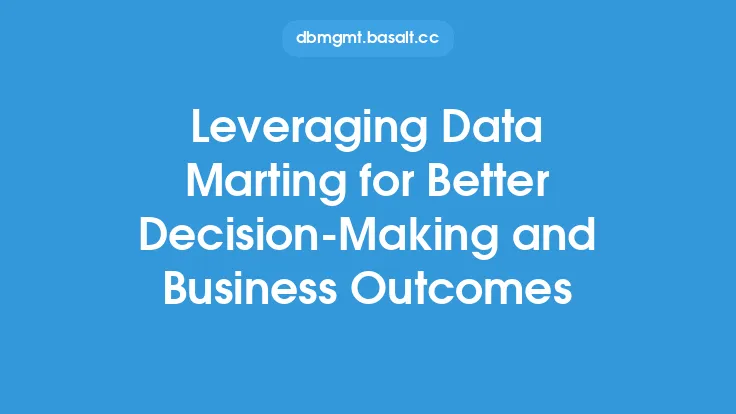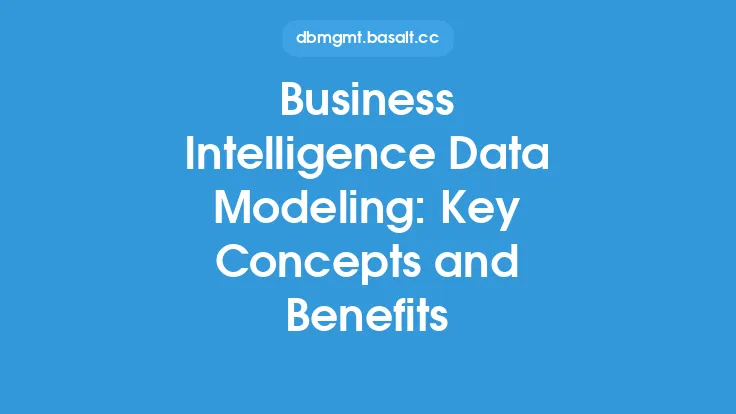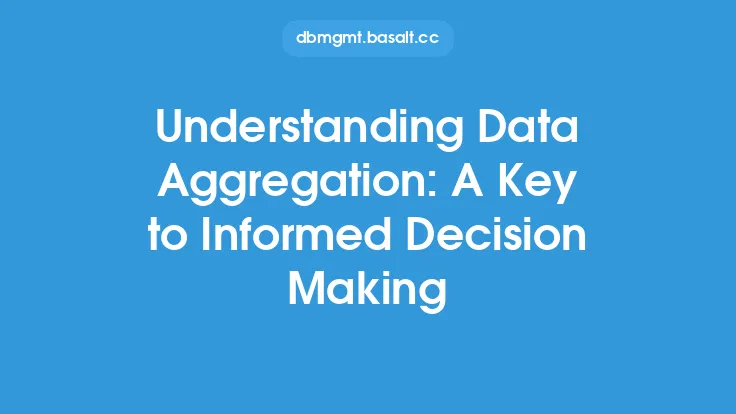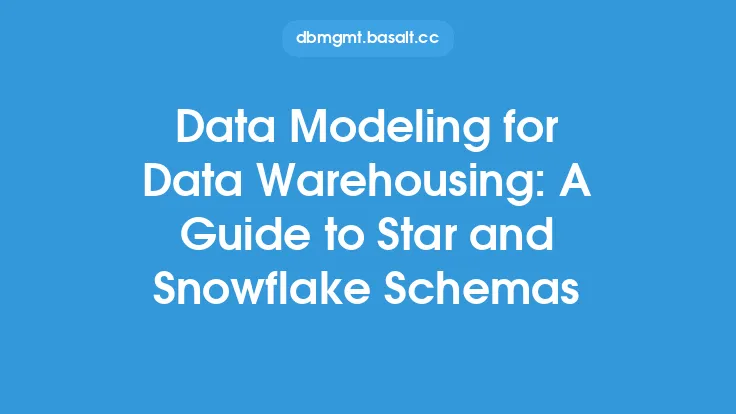In today's fast-paced business environment, organizations are constantly seeking ways to improve their decision-making processes. One key aspect of achieving this goal is through the effective use of business intelligence (BI) and data modeling. By leveraging these tools, companies can gain valuable insights into their operations, identify areas for improvement, and make informed decisions that drive growth and success. In this article, we will delve into the world of business intelligence and data modeling, exploring the concepts, techniques, and best practices that can help organizations make better decisions.
Introduction to Business Intelligence
Business intelligence refers to the process of collecting, analyzing, and interpreting large datasets to inform business decisions. It involves the use of various tools and technologies, such as data mining, reporting, and analytics, to extract insights from data and present them in a meaningful way. BI can be applied to various aspects of an organization, including customer relationship management, supply chain management, and financial management. By using BI, companies can identify trends, patterns, and correlations within their data, which can help them optimize their operations, reduce costs, and improve profitability.
Data Modeling for Business Intelligence
Data modeling is a critical component of business intelligence, as it provides a framework for organizing and structuring data in a way that supports analysis and decision-making. A data model is a conceptual representation of the data entities and relationships within an organization, and it serves as a blueprint for the design of databases, data warehouses, and other data storage systems. There are several types of data models, including entity-relationship models, dimensional models, and object-oriented models, each with its own strengths and weaknesses. By creating a robust data model, organizations can ensure that their data is accurate, consistent, and accessible, which is essential for effective business intelligence.
Key Concepts in Data Modeling
There are several key concepts in data modeling that are essential for business intelligence. These include entities, attributes, and relationships. Entities are the objects or concepts that are being modeled, such as customers, products, or orders. Attributes are the characteristics or properties of these entities, such as customer name, product description, or order date. Relationships refer to the connections between entities, such as a customer placing an order or a product being part of a order. By understanding these concepts, organizations can create a data model that accurately reflects their business operations and supports effective analysis and decision-making.
Data Modeling Techniques
There are several data modeling techniques that can be used to support business intelligence. These include entity-relationship modeling, dimensional modeling, and data vault modeling. Entity-relationship modeling is a traditional approach to data modeling that involves identifying entities, attributes, and relationships. Dimensional modeling is a technique that is specifically designed for data warehousing and business intelligence, and it involves organizing data into facts and dimensions. Data vault modeling is a more recent approach that involves modeling data as a series of connected vaults, each of which represents a specific business concept. By using these techniques, organizations can create a robust data model that supports effective analysis and decision-making.
Best Practices for Data Modeling
There are several best practices for data modeling that can help organizations create a robust and effective data model. These include keeping the model simple and intuitive, using standardized terminology and notation, and ensuring that the model is flexible and adaptable. It is also important to involve stakeholders from across the organization in the data modeling process, to ensure that the model accurately reflects the business operations and meets the needs of all users. By following these best practices, organizations can create a data model that supports effective business intelligence and decision-making.
Data Modeling Tools and Technologies
There are several data modeling tools and technologies that can be used to support business intelligence. These include data modeling software, such as Entity-Relationship Diagram (ERD) tools and dimensional modeling tools, as well as data warehousing and business intelligence platforms. Some popular data modeling tools include ERwin, PowerDesigner, and Oracle Data Modeler. Data warehousing and business intelligence platforms, such as Amazon Redshift, Google BigQuery, and Microsoft Azure Synapse Analytics, provide a range of tools and features for data modeling, data warehousing, and business intelligence. By using these tools and technologies, organizations can create a robust data model and support effective business intelligence and decision-making.
Challenges and Limitations of Data Modeling
While data modeling is a powerful tool for business intelligence, there are several challenges and limitations that organizations may encounter. These include the complexity of the data model, the need for ongoing maintenance and updates, and the potential for data quality issues. Additionally, data modeling requires significant expertise and resources, which can be a challenge for smaller organizations or those with limited budgets. By understanding these challenges and limitations, organizations can take steps to mitigate them and ensure that their data model is effective and sustainable.
Conclusion
In conclusion, business intelligence and data modeling are essential tools for organizations seeking to improve their decision-making processes. By leveraging these tools, companies can gain valuable insights into their operations, identify areas for improvement, and make informed decisions that drive growth and success. By understanding the concepts, techniques, and best practices of data modeling, organizations can create a robust and effective data model that supports effective business intelligence and decision-making. Whether you are a seasoned data modeler or just starting out, this guide has provided you with the knowledge and skills you need to create a data model that drives business success.





